by Carrie Brown, Engineering Technician
It is a common misconception that a “100-year flood” happens once in 100 years. The term can be quite deceiving when taken at face value. In fact, it is possible for two 100-year storms to occur 50, 25, or even one year apart. Let’s break down the terminology a bit and discuss what “100-year” is actually referring to.
Flooding occurs when water overflows onto land that isn’t typically inundated. Floods can result from large rain events, waves from a large body of water coming onto land, rapid snow melt, or when an artificial barrier breaks (such as a dam).
A flash flood results when heavy rainfall falls at a faster rate than can be absorbed into the ground or stored in a reservoir or lake. Similar to a sponge, the ground eventually becomes saturated, and remaining water is left to flow on the surface. Large impervious areas, such as parking lots, roads, and building roofs, can cause water to accumulate even faster. Flash flood events can be particularly dangerous as there may be inadequate time to warn (and in some cases, evacuate) the public residing within the flooded area.
A floodplain is the portion of a valley that has historically been inundated by overflowing streams, creeks, and rivers. Consequently, these areas have a higher chance of experiencing flood conditions. The Federal Emergency Management Agency (FEMA) and other government agencies have mapped out these areas affected by past flooding events. These maps are often used to determine flood insurance requirements or to aid communities in regulating future development. Permits are needed for development within a FEMA regulated floodplain. Floodplain maps can be found at the FEMA Flood Map Service Center.
At Fairfield SWCD, we engineer grassed waterways and stabilization structures, such as the timber box seen above, to handle large rain events. Waterways help to filter water and prevent soil erosion.
As defined by the National Weather Service, “a 100-year rainfall event (or more accurately the 100-year rainfall amount for a specified duration and at a given location) is an amount that on average is exceeded every 100 years, so its average recurrence interval is 100 years.” This means that it has a 1% chance of occurring in any given year. The actual number of years between flooding events can vary dramatically; it can happen twice in one year, three times in 50 years, or any interval in between.
Similarly, a 50-year rainfall event has a 1 in 50 or 2% chance of occurring in a year.
Now you can see why it is incorrect to take these terms literally since the average recurrence interval is simply an average.
| Recurrence intervals in years | Probability of occurrence in any given year | Percent chance of occurrence in any given year |
|---|---|---|
| 100 | 1 in 100 | 1% |
| 50 | 1 in 50 | 2% |
| 25 | 1 in 25 | 4% |
| 10 | 1 in 10 | 10% |
| 5 | 1 in 5 | 20% |
| 2 | 1 in 2 | 50% |
The amount of rain that “qualifies” for a 100-year rainfall is determined by studying past floods. Scientists use statistics to observe the frequency of large rain events and the average number of years between these events. From this they determine the probability that a flood of any given size will take place within a year.
As you might expect, these rainfall amounts vary based on location. The document below, produced by the National Oceanic and Atmospheric Administration (NOAA), shows the average recurrence interval for rainfall durations, ranging from 5-minutes to 60-days for Lancaster, Ohio.
The Precipitation Frequency Estimate can be selected for any location within the United States.
Precipitation-Frequency-Data-ServerYes, many flood designations will change over time. When a river basin is altered, including dams or changes in upstream urban development (and increased impervious surfaces), scientists then reevaluate the frequency of flooding and the amount of damage it could produce. This new data may be used to alter a location’s precipitation frequency estimates.
Check out the following resources for more information on floods, floodplains, and rainfall events.
Fairfield County Regional Planning Commission: Floodplains
City of Lancaster Floodplain Information
City of Pickerington Floodplain Information
National Weather Service’s Hydrometeorological Design Studies Center
by Carrie Brown, Engineering Technician
Also known as the Great Eastern Brood, Brood X (pronounced Brood Ten) is one of 15 broods of periodical cicadas that emerge throughout the eastern United States. Brood X is one of the largest groups, gracing 15 states, including central and western Ohio, with their collective presence.
Periodical cicadas spend most of their lifecycle under the ground, feeding on juices from tree roots in an immature state known as a nymph. Depending on the brood, these juveniles clamber upwards every 13 or 17 years, where they emerge synchronously en masse over a two week period, shed their outer shells, and commence what can only be described as a breeding frenzy.
With a population numbering in the billions, periodical cicadas only live a few weeks as an adult, and during this time they all share the same reproductive mission. Once this quest is fulfilled and the females have deposited their eggs in a nearby tree branch, their life cycle is complete.
Whether you love them or loathe them, one must admire the many unique qualities of these remarkable critters. Let’s take a look at 10 traits that will make sure-fire table talk. (Family dinners are about to get a whole lot more interesting.)
Video by G. Edward Johnson, Cicada Final Molt and Darkening timelapse, CC by 4.0
by Carrie Brown, Engineering Technician
*The audio and photo slideshow of this interview can be found on Fairfield SWCD’s YouTube Channel.
Tell us more about this conservation project and why you want to save Coyote Run.
David Hague: Okay. Well, it’s a question we’ve asked ourselves a number of times. It goes back to each of us has an idea of what nature is and that’s probably as kids, visiting a park or seeing something interesting in nature. But what we’ve all kind of lost is what nature was a couple hundred years ago. And so that image can be recreated if you start with a little bit of land and try to improve upon it, or at least restore it. So that’s what we’re trying to do here at Coyote Run.
Why should people care about their natural environment?
David Hague: Many folks will say we need to save something because it’s for our future, our kids, etc. And I won’t dispute that. However, we’re smart enough as a species that we should be able to grant the equal opportunity to the flora and fauna to live, that we have.
What types of habitat does your land offer and what wildlife species might be found?
David Hague: Well, the habitat is wet. It’s characterized in this part of Ohio with lots of fairly flat farmland and woods, and there are lots of drainage tiles. But some of it hasn’t been drained real thoroughly, so that creates a kind of wet forest environment. And that allows for wetlands and also what I call “wetlands in the woods,” which are vernal pools. Vernal pools are just temporary bodies of water, but there’s a great variety of flora and fauna that inhabit them. And so that’s what Coyote Run is pretty much about: enhancing and protecting all the wet features.
Spring is a fun time of the year. I used to hate February Ohio winter because of the cold and the ice, but that’s when things really get moving around here, even before the snow is off or the ice is off. A variety of organisms, in particular the one we watch most is salamanders – there’s a whole group of salamanders called mole salamanders that live in the woods and pop up in the spring. And so we watch for this event because it’s very fleeting. It only lasts long enough for their breeding period to get done and then, they go back to their homes in the woods. So it’s a fun time to be out at Coyote Run.
I’m sure COVID restrictions have impacted your ability to provide public programming. What types of events have you offered in the past and you plan to offer once again in the future?
David Hague: Well, we’ve done things as diverse as vernal pool exploration, which is fun in the spring, but each season has something going on. For instance, the heat of summer is a great time to watch for dragonflies and damselflies. So we’ve gotten out the proverbial nets and ran around the fields, catching them to see what we could catch. Wildflowers is another good public event. We’ve had celestial events, where people have come out to see what’s up in the sky. Mothing is very popular; we’ve had those events, which is kind of fun to do in the evening. I didn’t realize there were so many species, so many beautiful species of moths. We’ve had bat events where people come out to watch for bats, and we’d watch for signatures on acoustical equipment. And then of course there’s tree ID and just walking through the woods to see what’s what.
Are there volunteer opportunities at Coyote Run for folks who would like to get involved?
David Hague: There sure are! Like every place else, invasive species are a problem. So we spend a great deal of time trying to not only restore the property, but to getting rid of invasive species. And they’re the common ones everybody knows. So we look for volunteers to help us push back on the bad guys in nature.
Volunteering at Coyote Run to do invasive control is good, but you can actually help Coyote Run and many other places simply by doing the right things where you live. That means, first of all, let’s stop buying invasive species and planting them in our yards because eventually those come into natural areas. So you can be a volunteer in your own yard without ever leaving.
Our office has worked with you on multiple restoration projects. Describe to us how you have collaborated with Fairfield SWCD to enhance your landscape.
David Hague: It has been a very good partnership from day one. We worked with Soil and Water to help us identify invasive species, but also to help create and enhance wetlands. And to this day we continue to work with them. It’s been a very good relationship.
What future visions do you have for Coyote Run?
David Hague: Coyote Run has the potential to create enough biodiversity by size to be a natural entity that can last 500 years. That’s our goal. None of us will be around then, but nature will be around. And perhaps our distant relatives will look back and say, “I’m glad some people did something to help save it.” So Coyote Run is here to stay, hopefully here to stay in a natural environment and not just impacted by humans.
If you are interested in learning more about Coyote Run, visit their Facebook page.
This week’s 2021 Tree Sale highlight is the Red Osier Dogwood. Though it tends to be a bit of an underdog, this beautiful red-stemmed shrub has a boatload of functionality. As a Soil and Water Conservation District, we advocate for this species often, as it is at the top of its class at stabilizing soil and preventing erosion. This is especially true along streambanks.
Red Osier Dogwood is one tough cookie. This species can take a beating and keep on going. Once established, it can be inundated along a stream edge and live to tell its story. It can be pruned hard for live fascines (more on that later!) and easily make a comeback the following spring. Talk about resiliency!
Additionally, due to the striking red color of its stems, red osier dogwood is often used as an ornamental to beautify landscapes.
Let’s take a closer look at this shrubby native that has found the sweet spot between durability and charm.
The red osier dogwood doesn’t mind getting its feet wet…in fact it prefers it! They grow best in soils that are saturated for at least a portion of the growing season. Therefore, they are often seen growing on the edges of lakes, ponds, within wetlands, and on streambanks. Red osier dogwoods are perfect for sites that are nitrogen-rich and shallowly inundated in the spring, only to dry out by late summer.
On average, the red osier dogwood grows to a height and width of approximately 10’. It has a fast growth rate, gaining more than 2’ a year in height.
Red osier dogwood benefits from a type of pruning called coppicing. This management method involves cutting all stems to approximately 2-3 inches from the base in late fall, after the shrub has shed its leaves. Following pruning, apply mulch and fertilizer around the base. Coppicing will stimulate the shrub to send up new stems, often with especially vivid burgundy color.
The fleshy white berries that ripen in late summer are favored by many bird species, including eastern bluebirds, cardinals, woodpeckers, and grosbeaks. Gamebirds such as bobwhite quail, ring-necked pheasants, and wild turkeys also benefit from red osier dogwood fruit.
The fruit and foliage are enjoyed by mammals too, including black bear, beaver, squirrels, and deer.
Red osier dogwood typically begins leafing out in April. The bark, twigs, and leaves of the new growth are bright green in color.
White to cream-colored flower clusters appear from June to August, eventually developing to smooth, white berries that ripen in late summer.
Beginning in September, leaves turn from green to shades of red and purple and are eventually shed for the winter.
Bare, deep burgundy branches provide an interesting contrast with white snow and the drab browns of the off-season.
Because of its dense growth nature, red osier dogwood can be used as a secondary plant in windbreaks. It is also an ideal species to use for streambank stabilization as live fascines.
Live fascines are long bundles of live woody vegetation (6-8 inches in diameter) buried in a streambank in shallow trenches placed parallel to the flow of the stream. These branches are harvested from adult red osier dogwoods – a great use of stems leftover from a fall coppicing session!
The plant bundles sprout in the spring and develop a root mass that will hold the soil in place and protect the streambank from erosion. This method is often coupled with a row of stone placed at the toe (bottom of the slope that supports the weight of the bank) of an eroding bank.
Below are photos from a streambank stabilization project that Fairfield SWCD designed for Lancaster City School District to address streambank erosion issues along Fetters Run.
National Tree Benefits Calculator
South Central Power: Plant the Right Tree in the Right Place
*A Redbud video blog can be found on Fairfield SWCD’s YouTube Channel.
This week we highlight a species that is common throughout Ohio, especially the southern two-thirds of the state. Nonetheless, it is such an eye-catcher that it deserves a bit of spotlight. There are few trees or shrubs that hold a candle to the beauty of the Eastern Redbud. With a profusion of showy, pink flowers in the spring, followed by an array of striking, heart-shaped leaves in the summer, there is no question that this ornamental shrubby tree is turning heads.
Redbud is a member of the legume or bean family. You may be familiar with some of this family’s other members, such as honeylocust, Kentucky coffeetree, black locust, and wisteria. Important plants used for crop production and grazing also hold membership, including soybeans, peas, alfalfa, and clover.
Let’s take a closer look at this native jewel and how it could add some extra allure to your landscaping.
Redbud prefers deep, moist, organic, well-drained soils, but are quite adaptable to a variety of pH and moisture levels. However, they cannot tolerate soils that stay wet.
Adequate moisture and full sun will stimulate faster growth and increased flowering, but the plant can tolerate partial shade.
In the wild, redbud is usually an edge species and commonly has a leaning growth habit, seeking to capture as much sunlight as possible.
Redbud is a fairly quick-growing species, especially when young, gaining up to 24” in height per year. It typically grows to a height of 20’-30’ with an equivalent spread.
In the wild, redbuds tend to be multitrunked with a vase-like shape and rounded crown. However, many redbud cultivars exist that select for various features, including a lovely weeping variety.
The early blooming flowers of the redbud provide a nectar source to insects, including early-season butterflies. There are a few songbirds that are thought to eat their seeds, such as chickadees, along with larger birds including the northern bobwhite. Because of their shrubby habit, redbuds can provide nesting habitat for both small mammals and birds.
Due to their thin, papery nature, redbud leaves are a favorite among native leafcutter bees (Megachile spp.). Female bees will use their mandibles to snip small discs from leaf edges. They collect these leaf fragments, rolling them up to construct individual cells within their nest. Each leafy cell is equipped with a ball of pollen and nectar and contains a single larval offspring. The damage that occurs from this gathering doesn’t typically harm the tree and is just a minor curiosity. Nature never fails to amaze!
Heralding the commencement of spring, redbud delivers a spectacular show of lavender-pink flowers beginning as early as March. Stemming from old wood, profuse flower clusters can swathe the entire tree, blooming on twigs, branches, and even the trunk of the tree.
Green foliage typically appears in May and is often tinged red upon emergence. Redbud leaves are easy to identify by their familiar heart shape.
Flowers develop into green, flat, pea-like pods that eventually ripen to brown in mid- to late summer as they mature. Redbuds can hold their ripened fruit late into the winter and even into the early spring.
The redbud is a relatively short-lived tree with decline and death typically occurring around twenty years after planting. This is especially the case in urban areas with predominately poorly drained, clay soils. A number of tree diseases can be responsible for this lifespan limit, including trunk canker, verticillium wilt, and root rot.
Signs of trunk canker include sunken depressions in the bark of large branches or trunks. These wounds may appear to be healing before the tree eventually dies. Though there is no chemical treatment for this pathogenic fungus, if caught early the meticulous pruning of affected areas may provide rescue.
Perpetually wet soil is the culprit for verticillium wilt and root rot. These serious pathogens both affect the roots and vascular system but become evident when entire branches begin to die. However, these conditions can be prevented by planting redbud in well-drained areas.
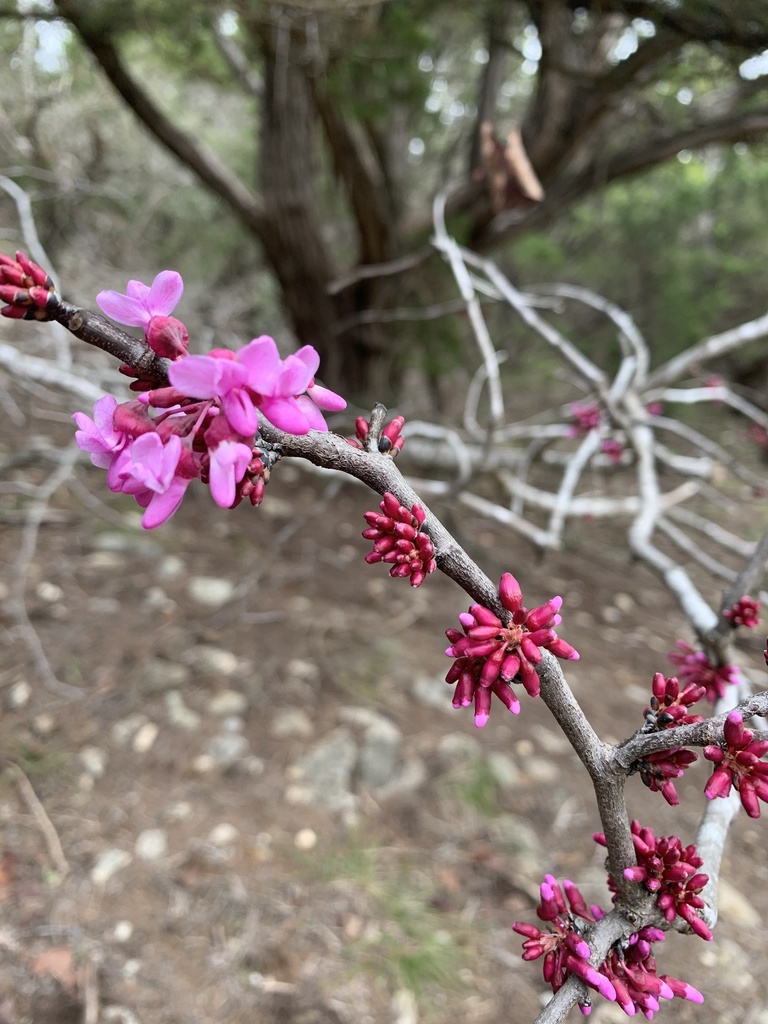

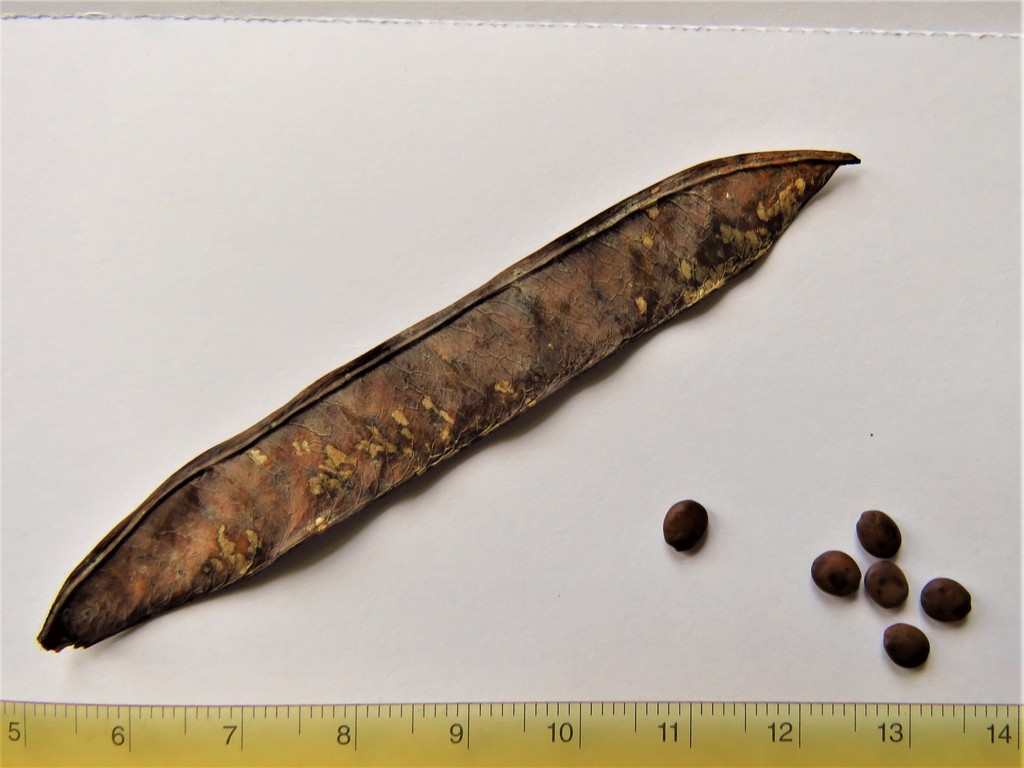
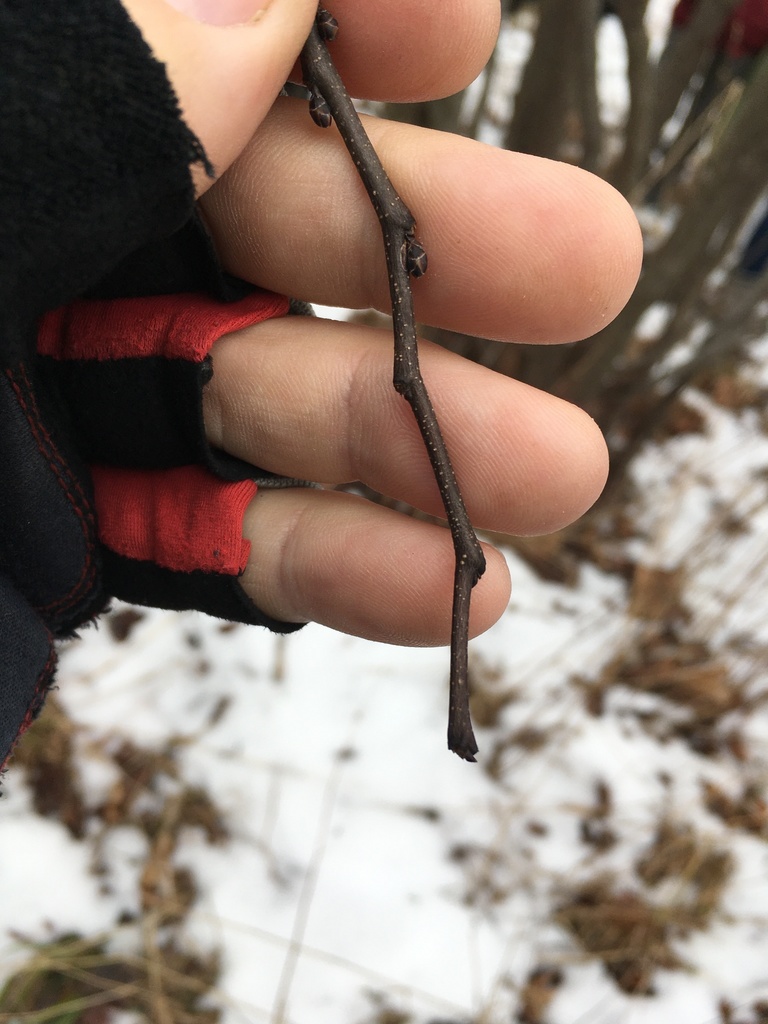

National Tree Benefits Calculator
South Central Power: Plant the Right Tree in the Right Place
This week we introduce a group of trees that you are no doubt familiar with. However, you may not fully recognize the multitude of benefits they provide to you, me, and the greater ecosystem. Today we salute the king of all trees, OAKS!
From plank flooring and kitchen cabinetry, to whisky barrels and railroad ties, the long lasting and durable properties of oak make it one of the most useful and coveted building materials of all time. It turns out oaks offer just as much in terms of ecosystem services within their dwelling habitats, potentially making them a great choice for your home landscape.
Let’s take a closer look at three oak species in particular: white oak, swamp white oak, and red oak. All three are available in our 2021 Tree Sale. And because they each have different planting requirements, it is possible that one could be a welcomed addition to your yard.
Red Oak – Also known as Northern Red Oak, Quercus rubra prefers moist, deep, rich, well-drained soils of slightly acidic pH and full to partial sun. However, it will readily adapt to dry soils and a variety of pH levels.
White Oak – Quercus alba prefers full sunlight (but will tolerate shade as a sapling) and deep, well drained, acidic to neutral soils. The species is adaptable in dry to average soils.
Swamp White Oak – Unlike the two species above, Quercus bicolor is a bottomland species, preferring rich, moist to wet, poorly drained acidic soils and full to partial sun. It adapts well to dry and average soils that are neutral to slightly alkaline in pH.
No matter the species, oaks require space. All three types will grow 50-70 feet high and nearly as wide when grown in the open under typical urban landscape conditions.
Red oaks have a faster growth rate than many oak species, gaining over 24” per year in height under ideal conditions. Swamp white oak and white oak grow at a slower rate, gaining 12” to 24” inches per year.
All are long-lived and can reach heights and widths of 100’ when grown in the wild. Ensure you take their mature size into account when considering adding an oak to your home landscape.
There are few native trees that can even begin to match the wildlife benefits offered by oaks! Let’s take a closer look at a few characteristics that make these trees true providers:
Oak seed, commonly referred to as acorns, are a popular food source for wildlife, and are gathered, eaten, and stored by rodents, birds, and deer. They are a great source of nutrients and are especially high in protein. The storage life of acorns is short, and they typically must be consumed in the winter following their collection. Those stashed in the right conditions by an absentminded blue jay or squirrel will sprout in the spring, starting a new generation of oak.
As oaks mature, they will develop an abundance of nooks, crannies, and hollowed-out places that provide shelter, protection, and nesting real estate for many woodland critters.
Oaks are host to over 500 different species of moth & butterfly caterpillars – more than any other native tree genus. Other than providing a huge boost to biodiversity, why is this important? More than 90% of our songbirds depend on these soft, wiggly packets of protein to rear their young. Did you know it takes 6,000-9,000 caterpillars each season to raise a brood of 5 chickadees? Oaks offer the ultimate buffet, playing a keystone role in the ecosystem.
Though oaks are not typically regarded for their flowers, like other hardwoods they are flowering plants. Oak flowers are wind pollinated and emerge in mid-spring, with male catkins (pollen coated, dangling appendages) and female flowers (usually golden in color) occurring on the same tree.
Trees follow this display with moderately shiny green leaves. The underside of white oak and swamp white oak leaves is white to whitish-green.
Acorns typically ripen in early to mid-autumn, with red oak acorns ripening earlier than most native oak species, as early as mid-summer.
Red oaks are named for their brick-red fall foliage. White oaks also produce notable autumn colors, with showy shades ranging from reddish-brown to reddish-purple.
If you have never made the trip, I highly advise you pay a visit to Logan’s Great White Oak. This magnificent giant is estimated to be over 500 years old.
The Mayflower reaching American in 1620, the U.S. Constitution signing of 1787, the invention of the electric light in 1879…this tree has been around for it all!
Located in a Logan, Ohio cemetery, it is hard to do this oak justice with photographs or videos and is well worth the excursion.
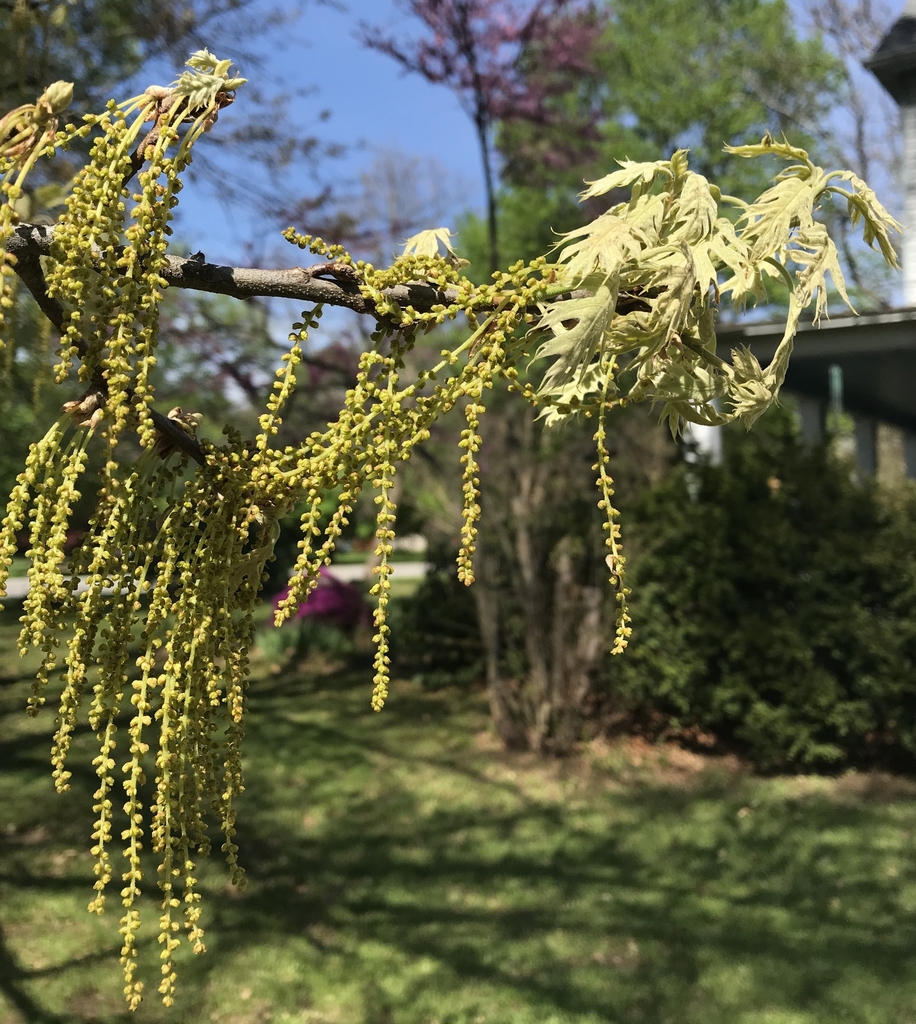
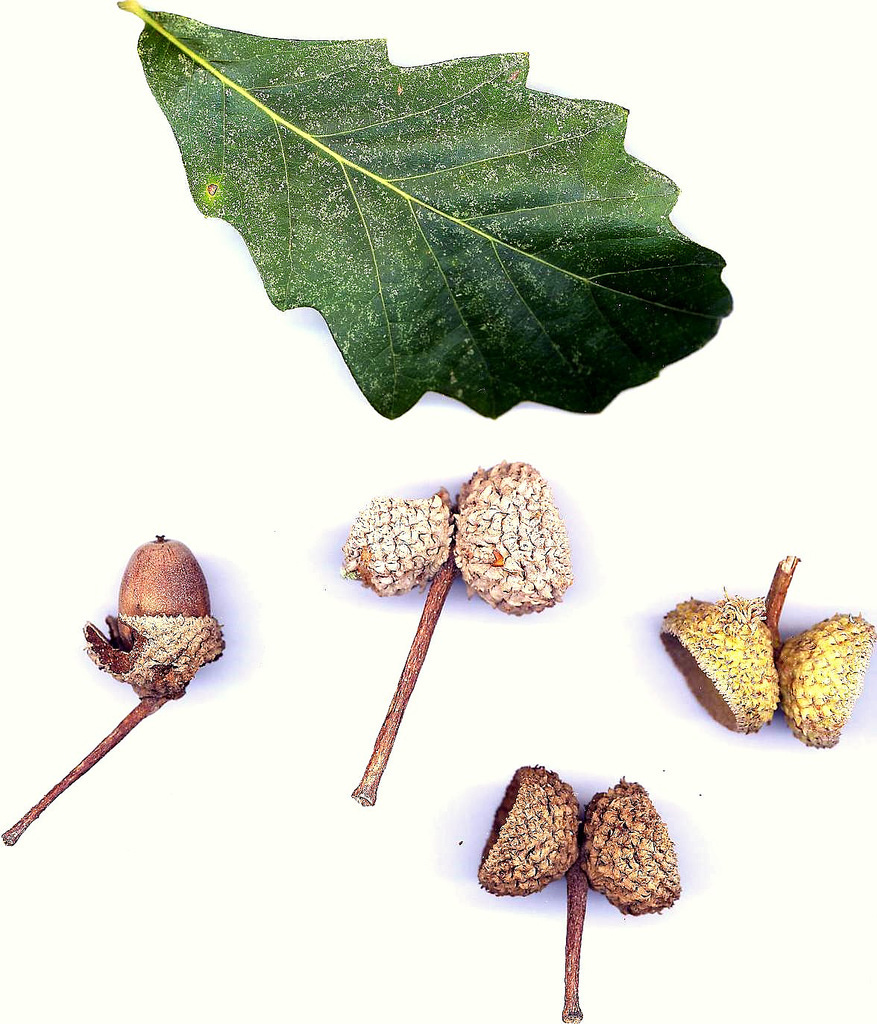
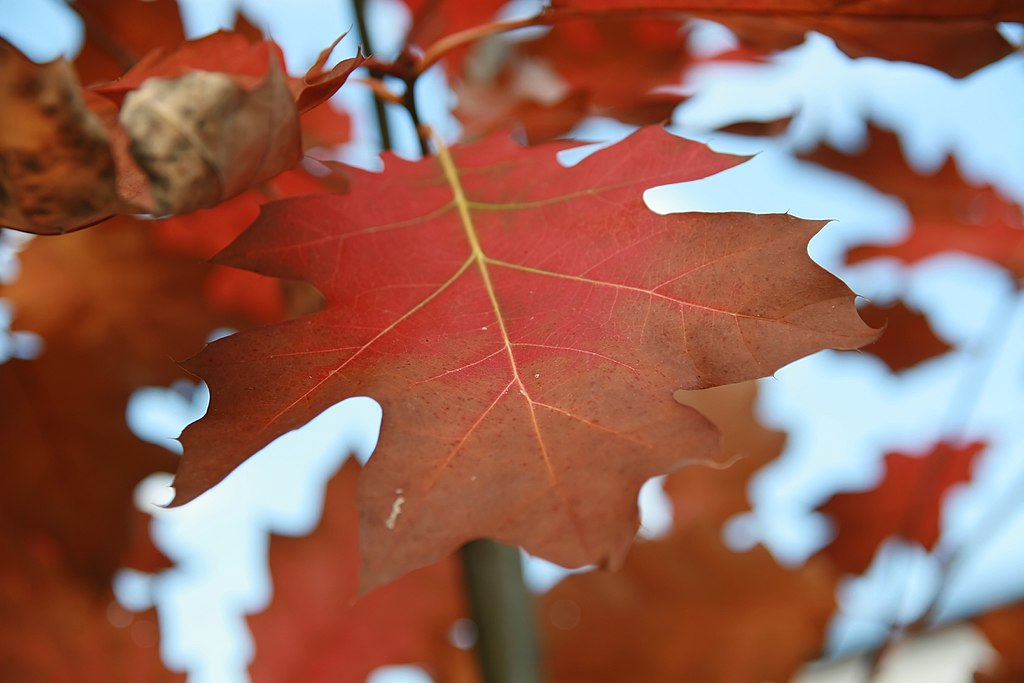
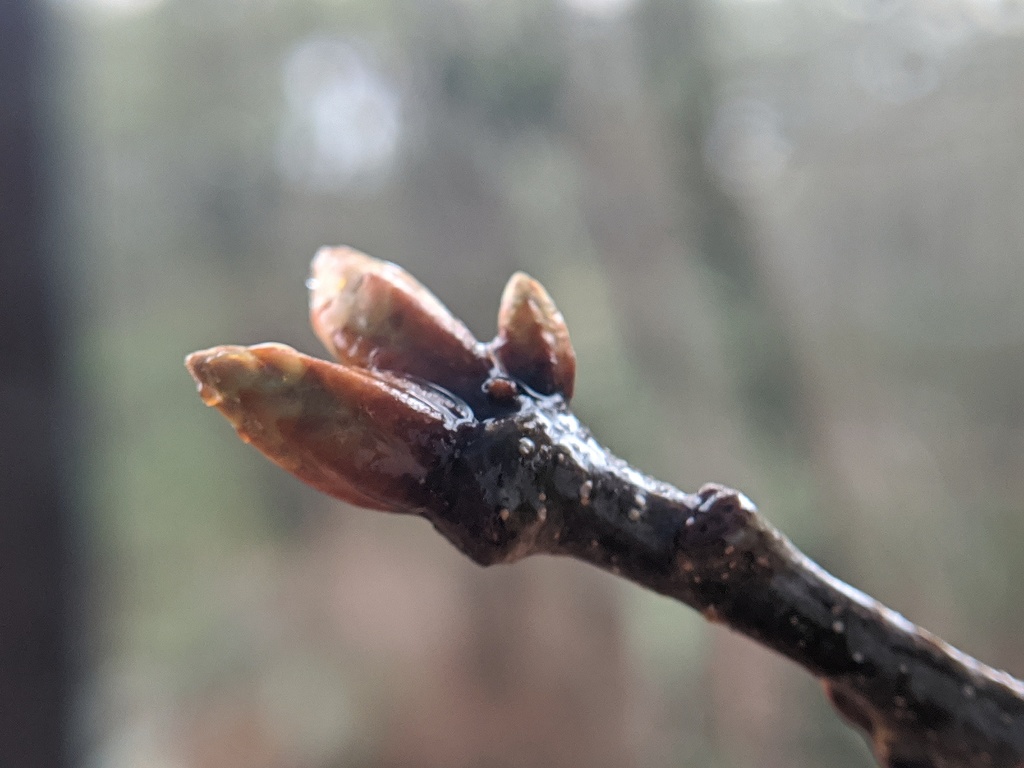
Sigrid Neilsen’s Oaks of the Greater Midwest
ODNR’s Trees of Ohio Field Guide
National Tree Benefits Calculator
South Central Power: Plant the Right Tree in the Right Place
Last week we introduced you to a tree that you were probably already familiar with, the Ohio Buckeye.
Today we will take a closer look at a tree that you may not know quite as well – the Pawpaw. Though growing in popularity, many people are shocked to discover that North America’s largest edible native fruit (and as of 2009, Ohio’s official native fruit) is a common understory tree that you’ve likely encountered in past outdoor adventures.
Interested in adding the pawpaw to your landscape? Let’s take a look at its growing requirements…and a few other tidbits that make this a pretty unique plant.
Pawpaws are a bit particular in terms of their growing requirements. To set them up for success, consider a site that has moist, deep, well-drained soils with a high amount of organic matter. In nature, pawpaws occupy the understory, often found growing in ravines, creek banks, and even steep hillsides.
As seedlings, pawpaws prefer areas that offer abundant shade, so it is advised that bare root seedlings are immediately transplanted to a shady site. As they mature, trees are more tolerant of sunlight. In fact, trees in full sun are more likely to flower and fruit than trees planted in shady locations.
When grown in the open and without canopy competition, pawpaws may reach 25 feet tall and 15 feet wide as an individual tree. When grown as an understory plant, pawpaws are shrubby and can often form large colonies, spreading primarily by root suckers. These root suckers are clones of the parent plant. As such, it is possible that an entire pawpaw colony is composed of only one plant!
It should be noted, that in order for fruit to be produced, two individual trees grown from separate seed sources are required. Pawpaw colonies composed of just one individual lack the genetic diversity needed for successful pollination and the fruit set that follows. If fruit is desired, be sure to plant at least two trees.
Pawpaw fruit is coveted by many wildlife species! From deer and raccoon, to squirrels and black bear, this fall sweet treat is in high demand. As a result, if YOU wish to harvest fruit, you’ll have to beat the wildlife — be sure to closely monitor ripening fruit.
The tree itself isn’t often browsed, as the twigs, leaves, and bark contain natural insecticides, making it a relatively pest-free species. One notable exception is the zebra swallowtail butterfly whose caterpillars feed on pawpaw leaves and depend on it as a host plant.
Pawpaws produce beautiful, maroon flowers in the early spring, typically March-May depending on weather and location. Flowers rely on blowflies and carrion beetles for pollination and produce an odor similar to rotting meat in order to draw them in.
Because this odor is slight and the pollinators aren’t overly enthusiastic, many flowers go unpollinated and fruit set rates can be low. (Gardeners may consider hand pollinating flowers using a paint brush to expedite pollination and improve fruit yield.)
Flowers are soon followed by foliage that develops into large, shiny leaves that are spirally arranged on the twig. The fruit of pawpaw is large and yellowish-brown, containing multiple dark brown seeds and edible custard-like pulp. Fruit is typically mature and ready for harvest by September or October.
Within its plant family, Pawpaw is a bit of an odd ball! This species, along with others within the same genus (Asimina), are most closely related to species with tropical and subtropical origins. Perhaps you have heard of the fruit, soursop, or the aromatherapy essential oil, ylang-ylang? Both products come from tropical trees that are cousins to the pawpaw!

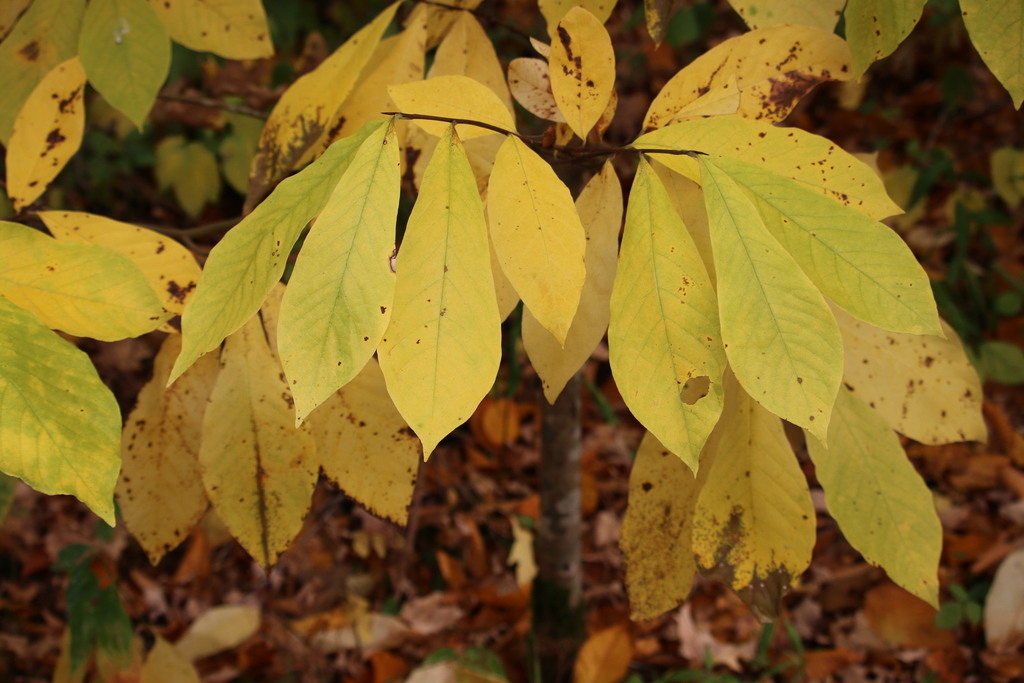



Growing Pawpaws as a Specialty Crop
23rd Annual Ohio Pawpaw Festival
National Tree Benefits Calculator
South Central Power: Plant the Right Tree in the Right Place
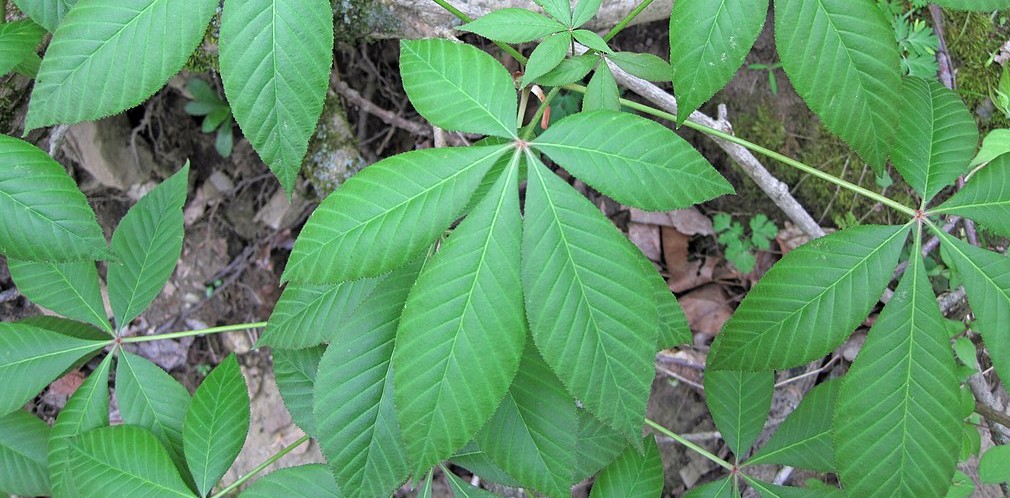
In the wild, Ohio Buckeyes typically occur in moist – but not perpetually wet – bottomlands, often along streams and floodplains. They perform best in moist locations with deep, well-drained soil but are quite adaptable. The Ohio Buckeye is an understory tree in its native habitat, so it can withstand, and even prefers, partial shade.
A medium-sized tree, growing 30-60 feet in height and 25-30 feet in width when grown in the open. Develops a strong taproot.
As mentioned above, all parts of the Ohio Buckeye are toxic for humans, dogs, and livestock. That being said, the Ohio Buckeye does have a few evolutionary partners that are able to partake in its seeds, including deer and squirrels. The flowers attract a variety of native pollinators such as bumblebees, long-tonged bees, and ruby-throated hummingbirds.
The Ohio Buckeye is a true spring ephemeral, beginning to leaf out in the early spring, as soon as April depending on location and weather. Spikes of showy, yellow-green flowers soon follow. Its newly emerged leaves have a beautiful, bronze color and eventually develop into the classic, palmately compound leaf (5 narrow leaflets) we are so used to seeing on our OSU garb. Unfortunately, this beautiful foliage is shed earlier than other tree species, typically in the late summer. It is at this time of year that the ripened Ohio Buckeye fruit is often noticed hanging on tree limbs, consisting of slightly spiny, golden-brown husks enclosing 1 or more dark brown seeds that are commonly referred to as Buckeyes.
Ohio Buckeyes are susceptible to a variety of leaf diseases, including leaf blotch, leaf scorch, and powdery mildew. While these ailments don’t kill the tree, they can cause it to lose its leaves, sometimes as early as late summer. Because of this, it is often recommended not to make the Ohio Buckeye the focal point of your yard. Rather, it may do better along a woods edge or your side yard.

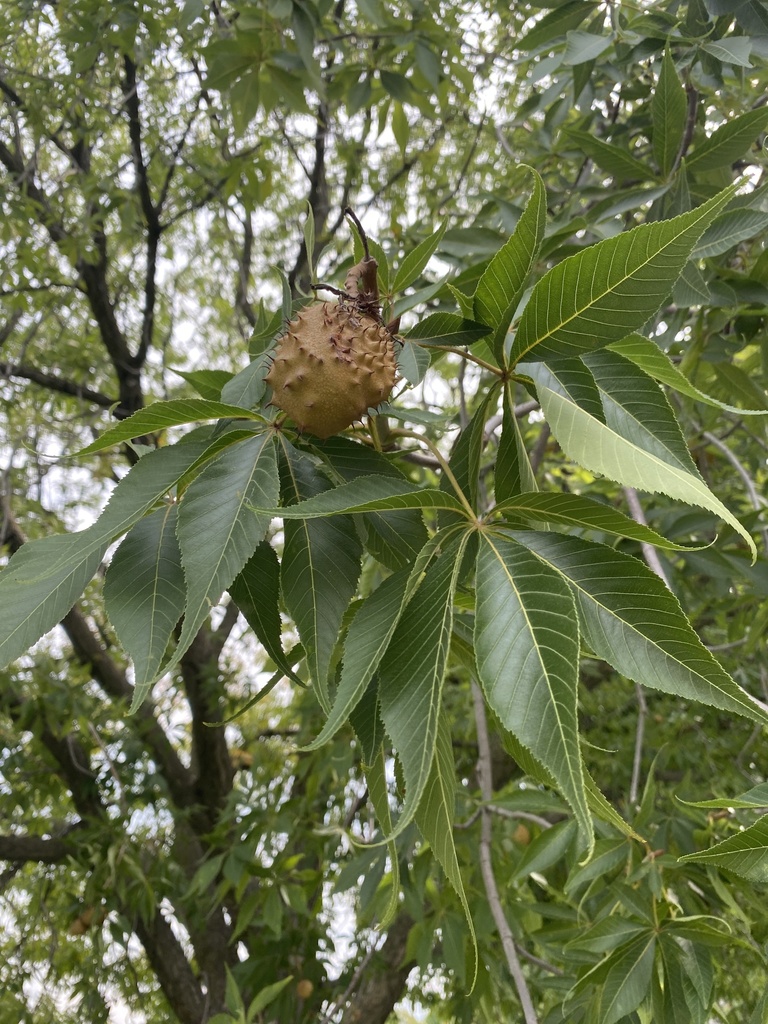
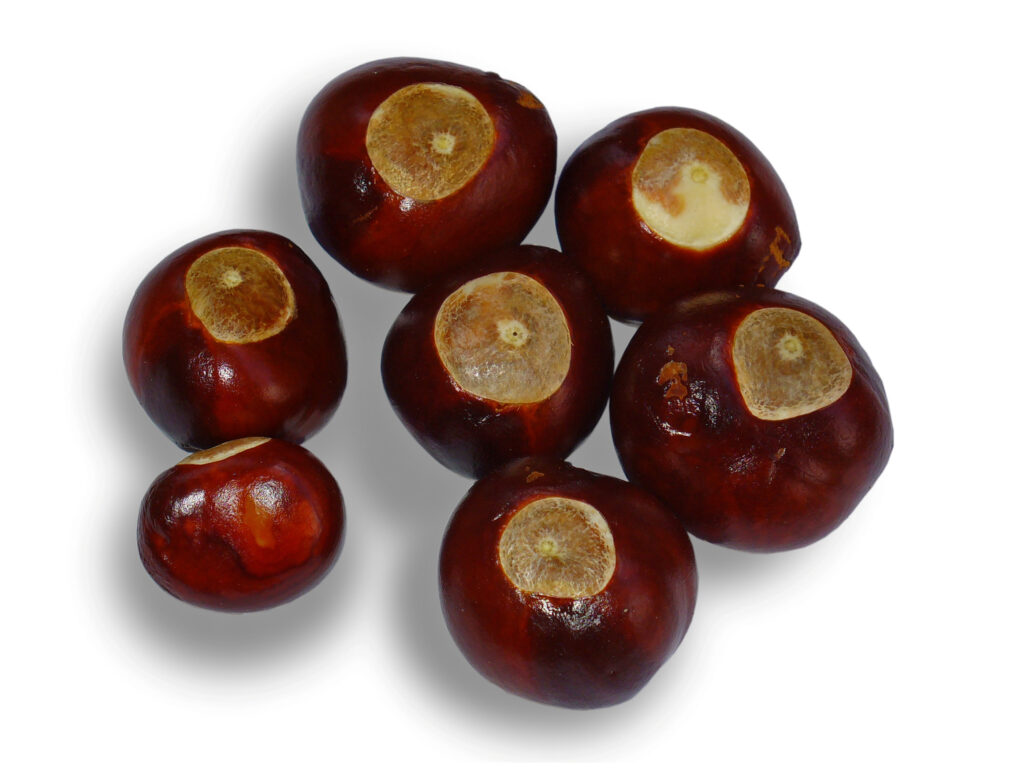

ODNR’s Trees of Ohio Field Guide
National Tree Benefits Calculator
South Central Power: Plant the Right Tree in the Right Place
In our last post on Soil Health, we explored the many microscopic organisms and creepy-crawlies that make soil their home. From nitrogen-fixing bacteria and nutrient-cycling fungi, to soil-aggregating earthworms and residue-shredding arthropods, soil is teeming with a great diversity of life. And by supporting this complex food web, we are helping to improve and maintain the quality and health of our plant life.
In order to best manage our soil, we first need to assess the status of its current health. Below, we present resources that you can use to learn more about your amazing underground world.
When assessing and managing your soil, it’s important to consider your soil type. There are many factors that influence your soil’s composition, such as parent materials (ex. bedrock that has weathered to become soil particles), whether the area in question was once covered in glaciers, weather patterns, plant & animal life, and recent land use.
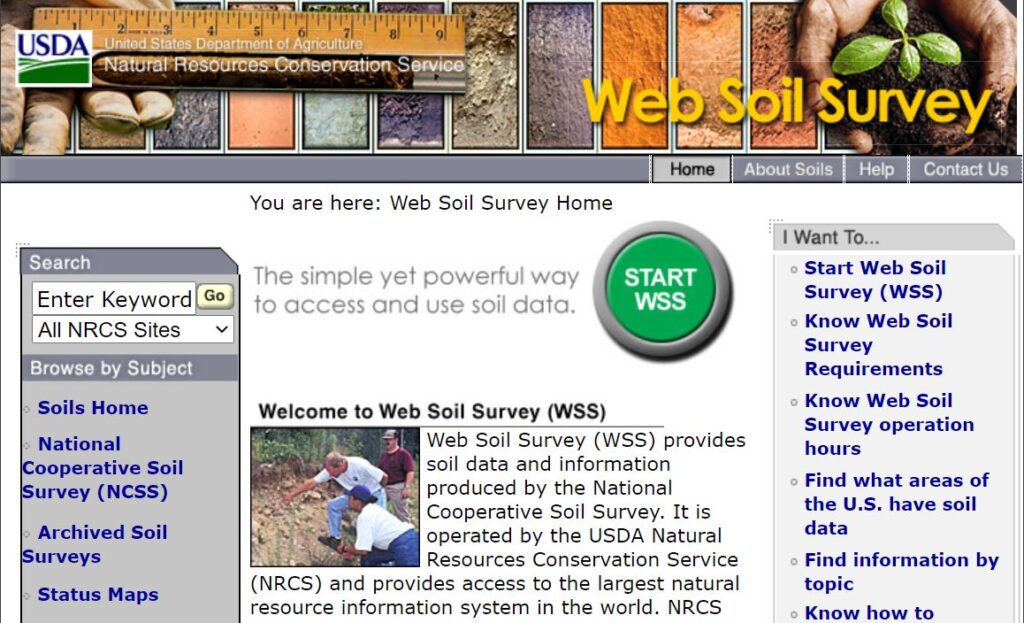
Web Soil Survey provides soil data and information produced by the National Cooperative Soil Survey. It is operated by the USDA’s Natural Resources Conservation Service (NRCS) and provides access to the largest natural resource information system in the world. NRCS has soil maps and data available online for more than 95 percent of the nation’s counties and anticipates having 100 percent in the near future. Soil surveys can be used for general farm, local, and wider area planning.

The Soil Explorer allows users to explore soil properties and landscapes around the world. It shows topography, fragipans, soil orders, drainage class, and dominant soil parent materials on an interactive map. This user-friendly online resource is free and available to find more information on soil qualities.
Soil health cannot be determined by measuring just one factor, and there are many indicators that can be evaluated. As such, it’s important to consider soil health from a variety of angles. An abundance of tools are available through agencies such as USDA’s Natural Resource Conservation Service and Ohio State University Extension that can help you to assess the health of your soils. A few helpful links are below.
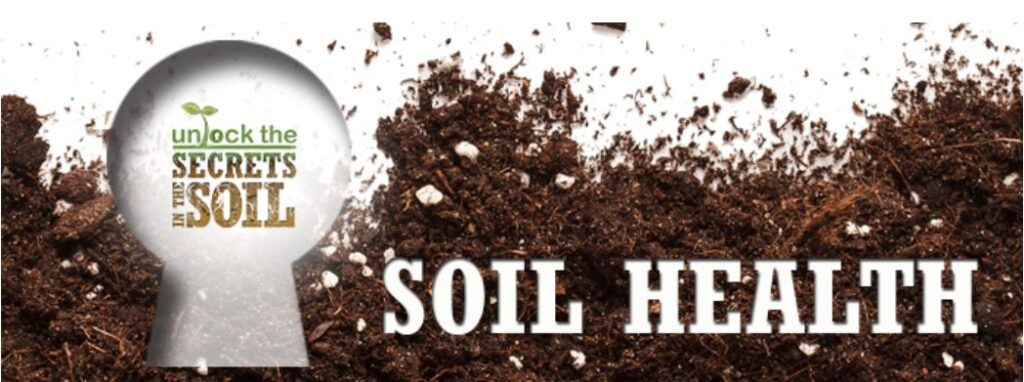
These resources, provided by USDA’s Natural Resource Conservation Service, are designed to help visitors understand the basics and benefits of soil health—and to learn about Soil Health Management Systems from farmers who are using those systems.
In this weekly series, farmers, industry, and academic experts weigh in on practical steps to improve soil health and measure impact on crop yield and farm profitability. Sessions are Thursdays, January 14 – March 18, 2021, 8am-8:30am. CCA CEUs are available for each session. There is no cost to attend, but registration is required.
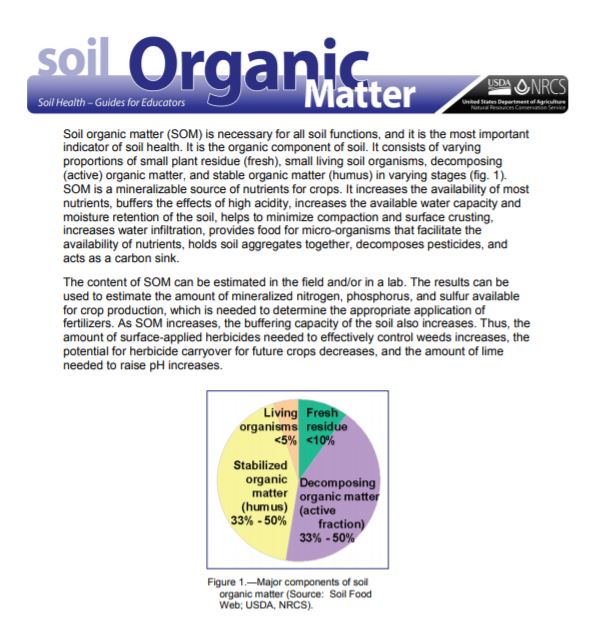
Soil Health Kit Guides and Videos help teachers and educators implement their soils curriculum. Each guide includes an introduction to the soil property, discussion of the inherent and management factors influencing it, and explanation of the property’s relationship to soil function. The educator’s guides also include detailed information on a method to measure the soil property and interpretations of the test results. Helpful to educators, the guides double as lesson plans with thought-provoking questions so students can start to apply what they have learned. Videos cover the concepts and soil properties from overview to testing.
Soil testing is important in determining the overall health of your soil. Whether you are a producer who is developing a nutrient application plan or a homeowner striving to optimize vegetable production in your garden, soil testing can provide you with a baseline of your soil health.

Soil testing is an inexpensive way to maintain good plant health in lawns and landscapes, and to maximize productivity of vegetable gardens and fruit crops. Soil test results pinpoint plant nutrient needs, and a soil testing lab’s recommendations can help guide fertilizer applications so just the right amount is used. Test results also provide information for making plant selection decisions based on “the right plant in the right place” and a soil test can help diagnose what went wrong if good plants go bad.
Productive agriculture is dependent upon healthy soils. The goal of a comprehensive soil fertility program is to maximize economic return while minimizing potential off-site environmental impacts. A soil fertility program starts with a representative soil sample that is used to develop nutrient recommendations.
If you are a producer who is interested in a Nutrient Management Plan, contact your local NRCS office. Fairfield County Residents can reach out to Dave Libben at 740-415-3921 or Brice Shaw at 740-415-3907.
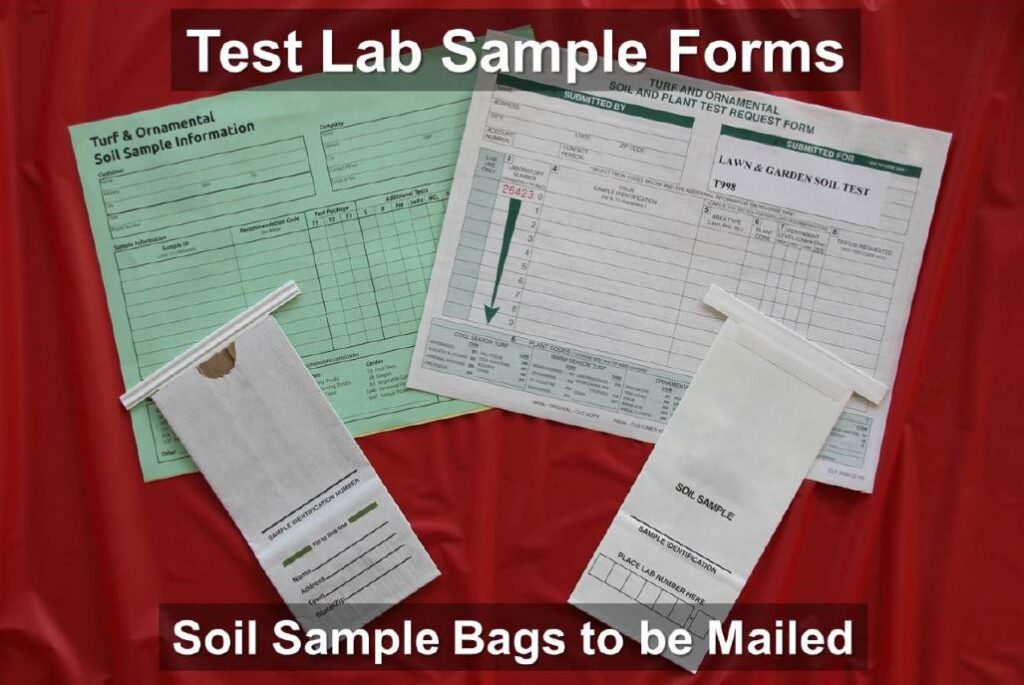
Fairfield County OSU Extension has developed a partnership with the University of Kentucky Soil Testing Laboratory that allows them to work with Fairfield County residents and farmers to service all soil nutrient testing needs. Soil bags, input forms, and instructions are available through your local Fairfield County OSU Extension office to assist those interested in having their soil analyzed. Contact OSU Extension at 740-653-5419.
You may not know it, but there is an entire world that exists under your feet that is as grand and complex as any ecosystem you may find on the surface of the Earth.
Like all other ecosystems, it is composed of plants, animals, and fungi, along with a few organisms you may not be quite as familiar with such as protozoans and nematodes.
Though it is often overlooked, this world is responsible for providing us with clean water & air, diverse forest ecosystems & wildlife, and the majority of the world’s food in the form of crops and grazing land for meat production.
Soil provides a basis for all life and has many essential functions.
Soil is a complex blend of minerals, water, air, organic (living) materials, and the decaying remains of once-living organisms.
As formally defined in the Soil Science Society of America Glossary of Soil Science Terms, soil is:
1. The unconsolidated mineral or organic material on the immediate surface of the earth that serves as a natural medium for the growth of land plants.
2. The unconsolidated mineral or organic matter on the surface of the earth that has been subjected to and shows effects of genetic and environmental factors of: climate (including water and temperature effects), and macro- and microorganisms, conditioned by relief, acting on parent material over a period of time.
Because plant life is dependent upon this underground ecosystem as a growing medium, there would be no food without it. This is just the beginning, however, as soil has many other essential functions:
Soil is essential for life as we know it on this planet. Let us take a closer look at this complex environment.
Did you know that there are more microorganisms in a teaspoon of healthy soil than there are people on this planet?
Though we cannot see it with the naked eye, soil is teeming with a great diversity of life.
If you think back to elementary school science class, you may remember the concept of a food web.
A food web is a representation of how organisms are related to each other based on what they eat.
And you might recall that the source of the energy getting passed along is the Sun. Plants are able to utilize the Sun’s rays to make food for consumers, such as humans.
It turns out that within the soil there are numerous organisms that are also dependent upon plants and many assist plants in making this energy transformation.
Let’s take a look at some of the major players:
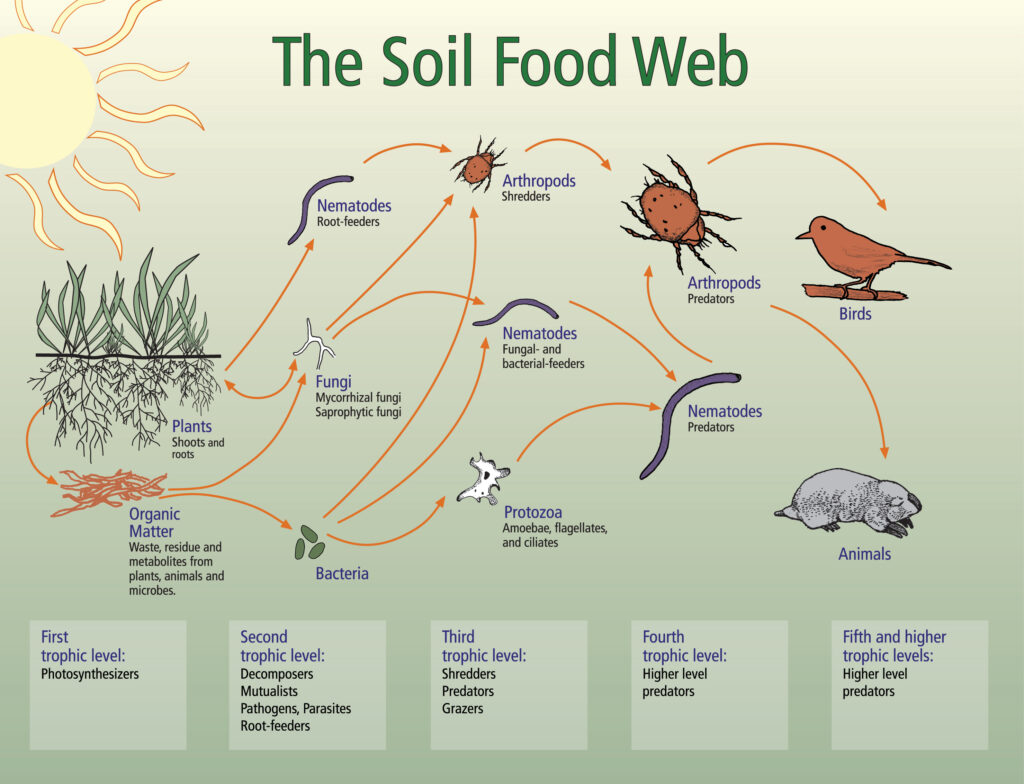
Though very tiny, bacteria are abundant in soil and serve many essential functions. Most bacteria are decomposers and play the important role of transforming dead matter into a form that can be used by other organisms in the food web. Some can even break down pesticides and pollutants in the soil.
Additionally, many people are aware of the symbiotic relationship some bacteria form with the roots of legumes such as soybean and clover, ultimately transforming nitrogen from the air into a form that other plants can utilize.
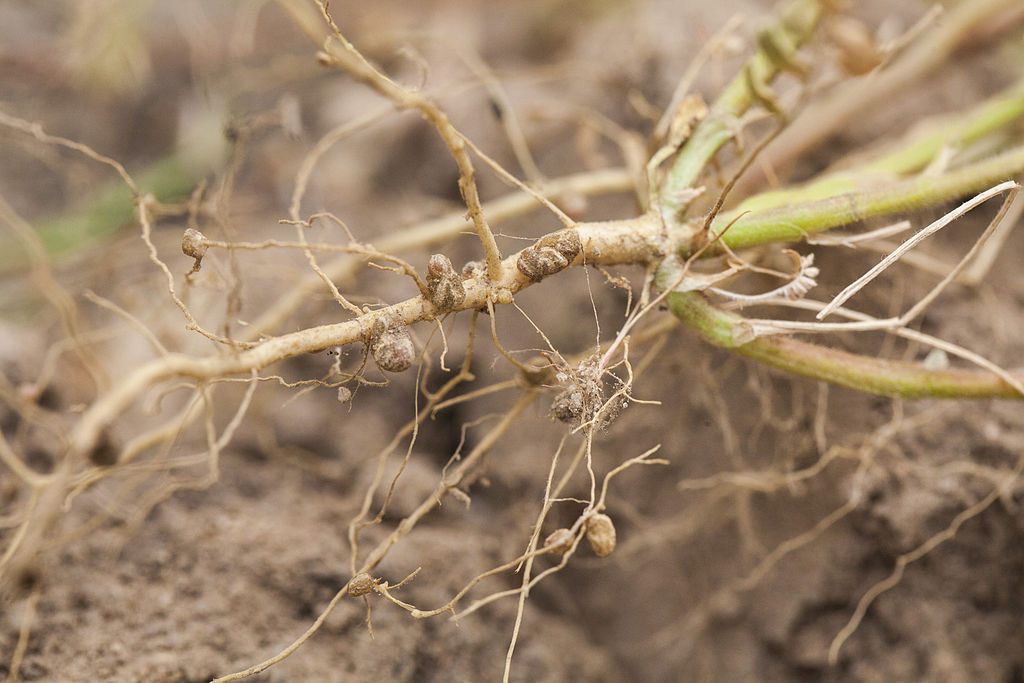
Most of us think of mushrooms when we hear the word fungi. If we think of fungi in terms of an apple tree, the apple is represented by the mushroom, also called the fruiting body. Fruiting bodies produce spores rather than the seeds found inside of an apple, but the purpose is the same: to ensure that there are future generations.
The apple is only a small portion of the apple tree, just like the mushroom is only a small portion of the fungus. But rather than having a large structure above the ground such as a tree, most of the fungus organism is found below the ground! In fact, a single fungus is a complex underground tangle of strands that can cover areas even larger than a baseball diamond.
Soil fungi have a variety of functions in the food web including nutrient-cycling. As such, fungi will colonize the roots of plants, essentially extending the plant roots’ reach, allowing it to obtain important nutrients, such as phosphorus, that would normally be out of grasp. In return, the fungi are supplied with carbohydrates from the plant. This symbiotic relationship is essential for healthy plant function.

Ranging in size from microscopic to several inches long, there are many species of bugs that call the soil home. While some act as pests consuming live plant matter, most consume fungi, worms, or other arthropods.

As they feed, arthropods aerate and mix the soil, regulate the population size of other soil organisms, and shred organic material.
This is not an exclusive list of soil-dwelling organisms, however. There are many types of single-celled soil protozoa, primarily feeding on bacteria. Additionally, tiny worms called soil nematodes exist and can be both beneficial and detrimental.

And one cannot forget to mention the most notorious soil resident, the earthworm. These critters benefit crop production in many ways such as mixing and aggregating soil, increasing water filtration, and providing channels for root growth.
Join us in 2021 as we take a look at assessing the health of your soil and review tips on maintaining soil health.
NRCS provides agricultural producers with financial resources and one-on-one help to plan and implement improvements, or what NRCS calls conservation practices. Using these practices can lead to cleaner water and air, healthier soil and better wildlife habitat, all while improving agricultural operations.
Through EQIP, you can voluntarily implement conservation practices, and NRCS co-invests in these practices with you. Together, NRCS and producers invest in solutions that conserve natural resources for the future while also improving agricultural operations.
Any eligible agricultural producer can submit an EQIP application at any time. NRCS announces “cut-off” or application submission deadline dates to evaluate, rank, and approve applications received by the announced date. EQIP contains provisions to distribute percentages of program funds by categories including type of agricultural land use, type of producer, natural resource concern, conservation practice and special initiatives.
The State Conservationist, in consultation with the State Technical Committee and Local Work Groups, has developed the 2021 ranking criteria to prioritize and subsequently fund applications addressing priority natural resource concerns in Ohio. To learn how to get started with NRCS, visit www.nrcs.usda.gov/getstarted.
Applications signed and submitted to NRCS by the January 15, 2021 deadline will be evaluated for fiscal year 2021 funding.
To discuss eligibility and/or apply for EQIP, contact your local service center. If you live in Fairfield County or Hocking County, contact District Conservationist, Dave Libben at dave.libben@usda.gov or 740-415-3921; or Soil Conservationist, Brice Shaw at brice.shaw@usda.gov or 740-415-3907.
Eligible EQIP applicants include agricultural producers, owners of non-industrial private forestland, and Tribes that:
Eligible land includes cropland, rangeland, pastureland, non-industrial private forestland and other farm or ranch lands. Additional restrictions and program requirements may apply.
Applicants must complete and file all application and eligibility paperwork as required. Applicants approved for funding must sign an EQIP contract and implement the planned conservation practices to NRCS standards and specifications as scheduled.
Starting a conservation practice in an EQIP contract before final written contract approval renders that practice ineligible for EQIP assistance unless NRCS granted a written waiver.
Applications may be considered for funding in a variety of agricultural categories such as cropland, pasture operations, and organic. Several special projects are also available which address water quality, forestry management, improving pollinator populations and wildlife habitat, pasture improvements and many more. See the EQIP Category Table for full details.
Amid a global pandemic, it’s not uncommon to experience a sense of isolation and a thirst for human connection. Citizen Science is an ideal way to connect with others virtually, while contributing information that can trigger real world change.
Science needs more ears, eyes, and perspectives than any one scientist can possibly possess. Citizen Scientists conduct scientific research, collaborate with scientists to improve their capacity, and ultimately increase the public’s understanding of science. Additionally, Citizen Science is a fun and engaging way to learn something new, while connecting with people locally or across the globe.
From surveying and recording the bird species at your backyard birdfeeder, to noting the date your favorite tree begins to leaf-out or flower, there is a Citizen Science project for all ages and interests. Citizen Science advances many fields including ecology, medicine, meteorology, genetics, engineering, and more. These immense collaborations amongst people from all over the world allow for discoveries that a single scientist could never attain alone.
Below, we highlight four popular Citizen Science projects that you can get started with today!

Have you ever experienced the phenomenon of seeing rain falling in the distance but never feeling a drop in your location? If so, you know how variable precipitation can be!
CoCoRaHS (Community Collaborative Rain, Hail and Snow Network) is a nonprofit, community-based network of volunteers from all over the country who measure and report rain, hail, and snow in their backyards. The measurements collected by Precipitation Monitors have many applications that help the public better understand weather & climate, and the information is used by many organizations, including The National Weather Service, NOAA, and locally by emergency managers, farmers, and homeowners.
Fairfield County has an active Precipitation Monitoring network. Citizen scientists take daily precipitation measurements in their own backyards using low-cost measurement tools, including a 4” diameter, high capacity rain gauge.
Want to learn more? Listen to our recent interview with OSU Extension, describing the Precipitation Monitoring program and the rainfall trends observed in Fairfield County this summer. If you are interested in getting involved, contact Carrie Brown at cbrown@fairfieldswcd.org.

Audubon’s Christmas Bird Count is the nation’s longest-running community science bird project and fuels Audubon’s work throughout the year.
Christmas Bird Count (CBC) occurs December 14 to January 5 every year. Each count takes place in an established 15-mile wide diameter circle. Count volunteers follow specified routes through the designated area, counting every bird they see or hear all day. It’s not just a species tally—all birds are counted all day, giving an indication of the total number of birds in the circle that day.
If you are a beginning birder, you can join a group that includes at least one experienced birdwatcher.
If your home is within the boundaries of a CBC circle, then you can stay at home and report the birds that visit your feeder on count day as long as you have made prior arrangement with the count compiler. Check out a map view of the circles expected to be included in the 121st Christmas Bird Count on how to contact the compiler.
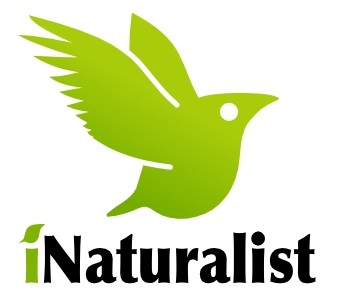
One of the world’s most popular nature apps, iNaturalist connects people with nature by helping them identify the plants and animals around them while contributing to a vast biological database.
iNaturalist is an online social network of over a million people sharing biodiversity information to help each other learn about nature. It’s also a crowdsourced species identification system and an organism occurrence recording tool. You can use it to record your own observations, get help with identifications, collaborate with others to collect this kind of information for a common purpose, or access the observational data collected by iNaturalist users. What’s more, by recording and sharing observations, you’ll create research quality data for scientists working to better understand and protect nature.
iNaturalist is free and easy to use for anyone with a computer or smartphone with Internet access. It’s also fun to try and identify other people’s observations, meet folks with similar interests, and participate in projects that other people on iNaturalist are running.

We have all reveled in the changing colors of leaves in the autumn and witnessed the long-awaited burst of green as trees begin to leaf-out in the spring. The study of these seasonal changes is known as phenology. Also described as nature’s calendar, phenology is the study of life cycle changes in plants and animals. This includes the flowering of plants, the emergence of insects, and the migration of birds.
Nature’s Notebook is a national, online citizen science program that connects participants with nature and gives them the tools needed to contribute to scientific discovery by observing the seasonal changes surrounding them.
As an observer, you’ll spot things you never noticed before – the green tip of a breaking leaf bud in the spring or the slightest blush on a maple leaf that foreshadows the coming fall. You can develop a more nuanced appreciation of our natural world when you participate in Nature’s Notebook.
Researchers, resource managers, educators and others use your data for scientific discovery and decision-making. Phenology data helps to predict threats to people and the environment such as wildfires, drought, or flooding. The information helps to decide the timing of events, from when to harvest or irrigate land to when to conduct controlled burns in forests.
Create a free account to intimately connect with plants or animals that you see all the time in a brand new way.
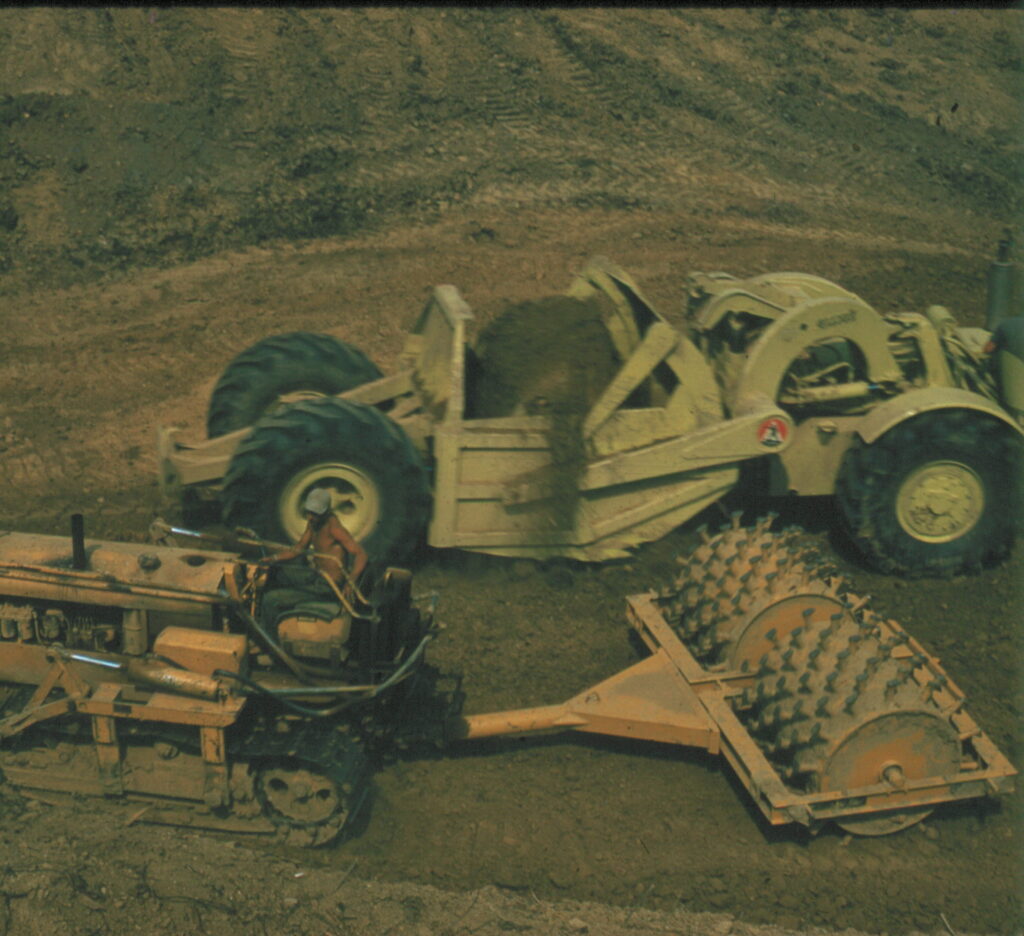
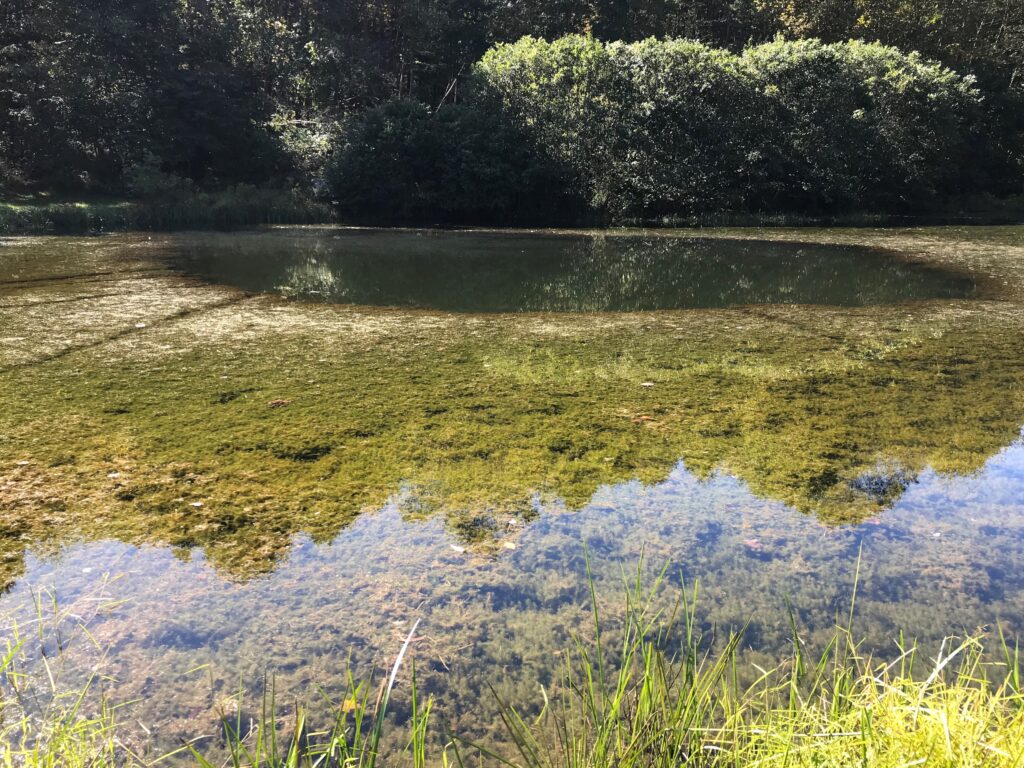
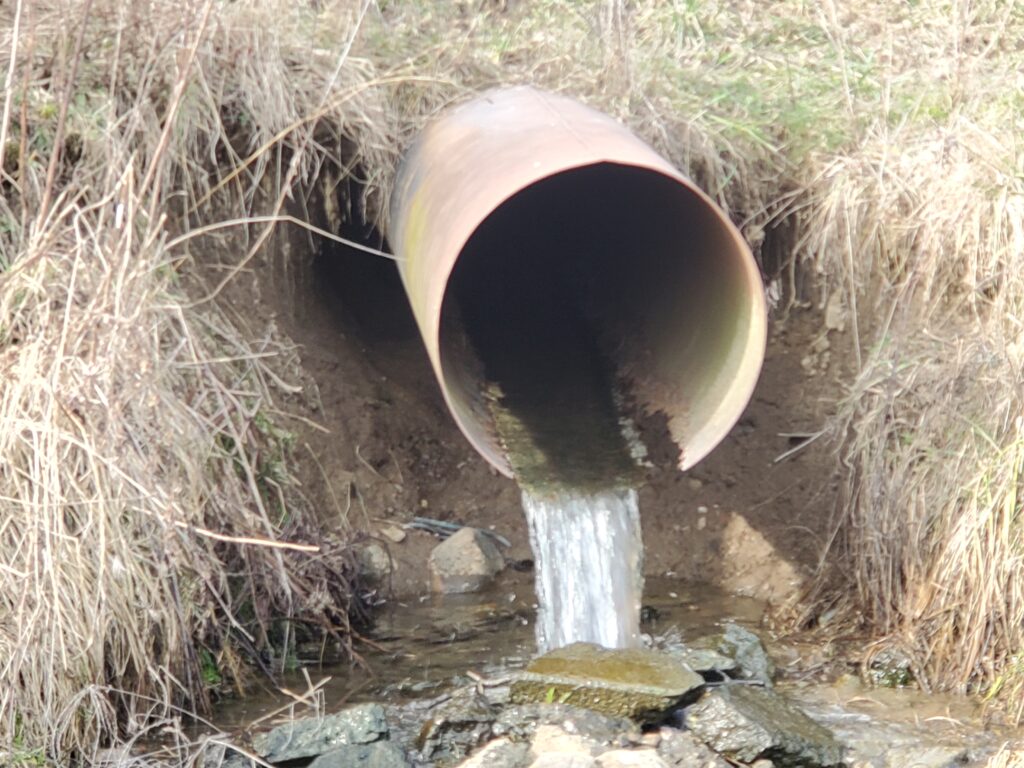


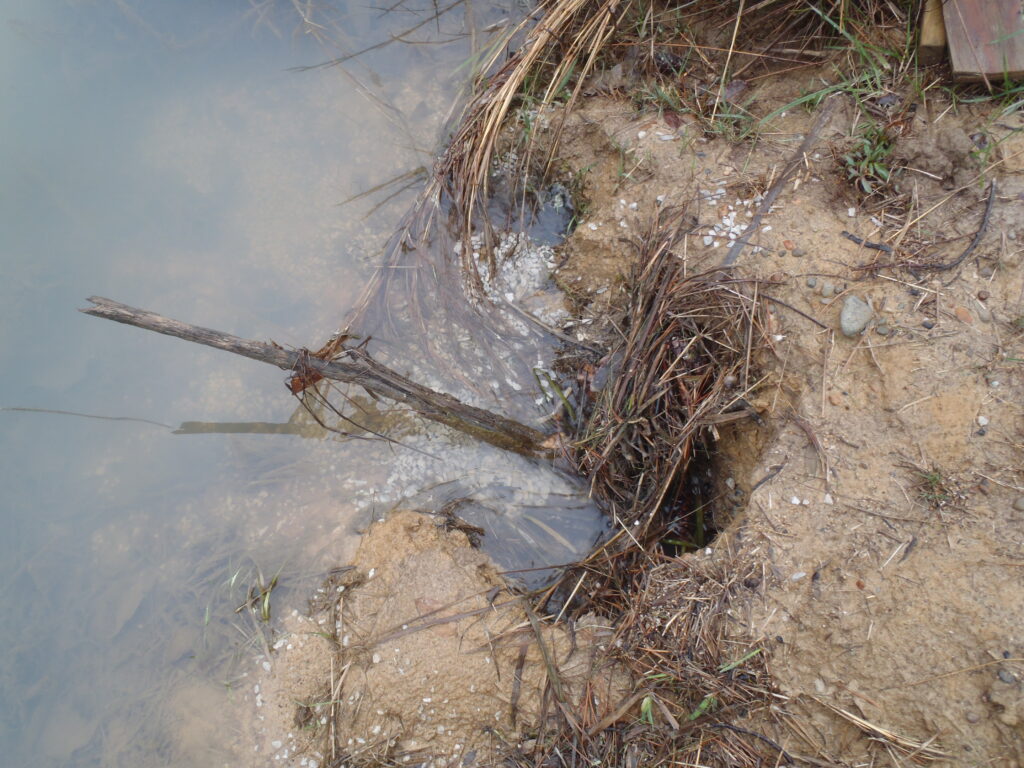
We often receive calls regarding the best practices of water drainage. (“Water” is in our name, after all!)
Below are water drainage “rules of thumb” that we at Fairfield Soil and Water Conservation District often recommend to folks. Some information is found in more detail in the resource sections of our website at www.fairfieldswcd.org.

Watch a grassed waterway in action! The timber drop structure at the bottom of the waterway helps to control flow and prevent erosion.

Aerials can be very revealing! The aerial on the left clearly shows systematic tile in a field. The aerial on the right was taken a few years later after the western portion of the property had been sold as a house lot.
As you can see, tile lines were cut when the house was built. Unfortunately, the tiles weren’t appropriately rerouted during construction. This resulted in a very wet basement (see below) and had to be addressed.
